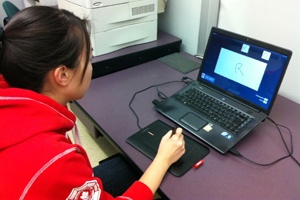User Adaptation to a Faulty Unistroke Gesture Recognizer
In this project we investigated user adaptation to a faulty unistroke gesture recognizer of a text entry technique by switching to an alternative gesture set. Our intent was to verify the hypothesis that users gradually adapt to a faulty gesture recognition technique’s misrecognition errors and that this adaptation rate is dependent on how frequently they occur.
Pilot Studies
We conducted several pilot studies and informally surveyed a number of popular gesture-based text entry and other systems, including Path Input, DioPen, Touch-Writer, and Gesture Go. We fine-tuned the experiment software based on the results of these studies to increase the external validity of this work by making it comparable to existing systems. Results of one of these pilots could be found in the workshop paper below.
Ahmed Sabbir Arif, Wolfgang Stuerzlinger. 2012. How do users adapt to a faulty system? In CHI 2012 Workshop on Designing and Evaluating Text Entry Methods (May 5, 2012). Austin, TX, USA, 11-14.

Final Studies
We then conducted two user studies that confirmed that users gradually adapt to misrecognition errors by replacing the error prone gestures with alternative ones, as available. Also, users adapt to a particular misrecognition error faster if it occurs more frequently than others.
Ahmed Sabbir Arif, Wolfgang Stuerzlinger. 2014. User adaptation to a faulty unistroke-based text entry technique by switching to an alternative gesture set. In Proceedings of Graphics Interface 2014 (GI '14). Canadian Information Processing Society, Toronto, Ontario, Canada, 183-192.

This project was funded by NSERC, the GRAND-NCE, and York University.